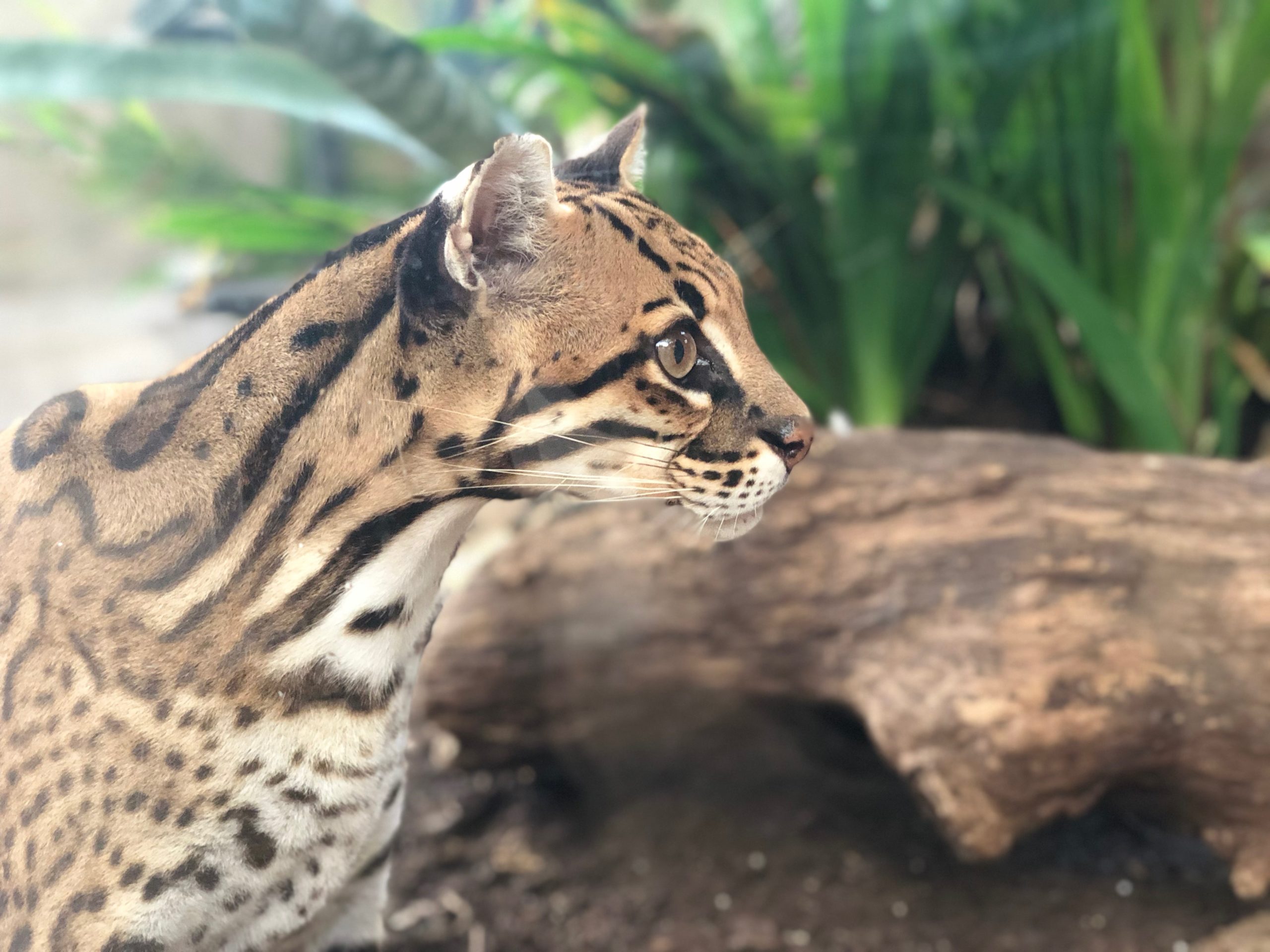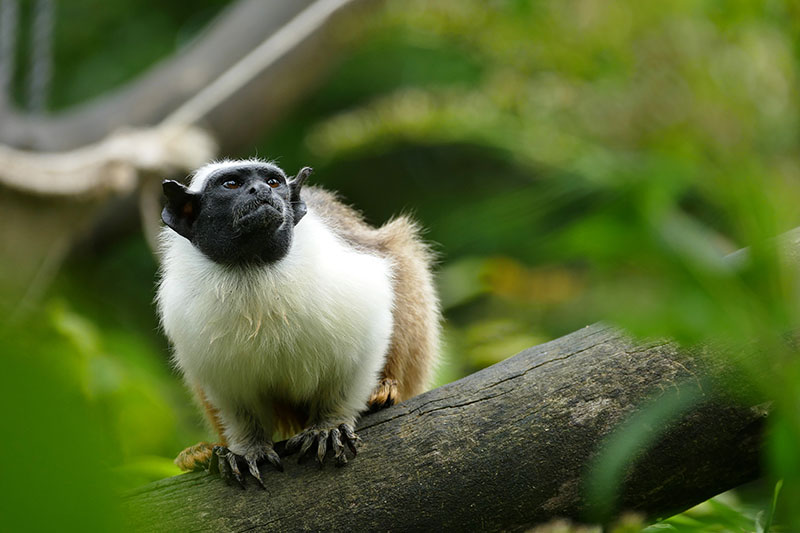
The Pied tamarin is white on its shoulders and front, with a striking dark brown back, hind part and upper tail. The fur lightens to a rust color on the lower belly, inner thighs and underside of the tail. The bald head has black skin and the large ears add to the distinguished appearance of this species.
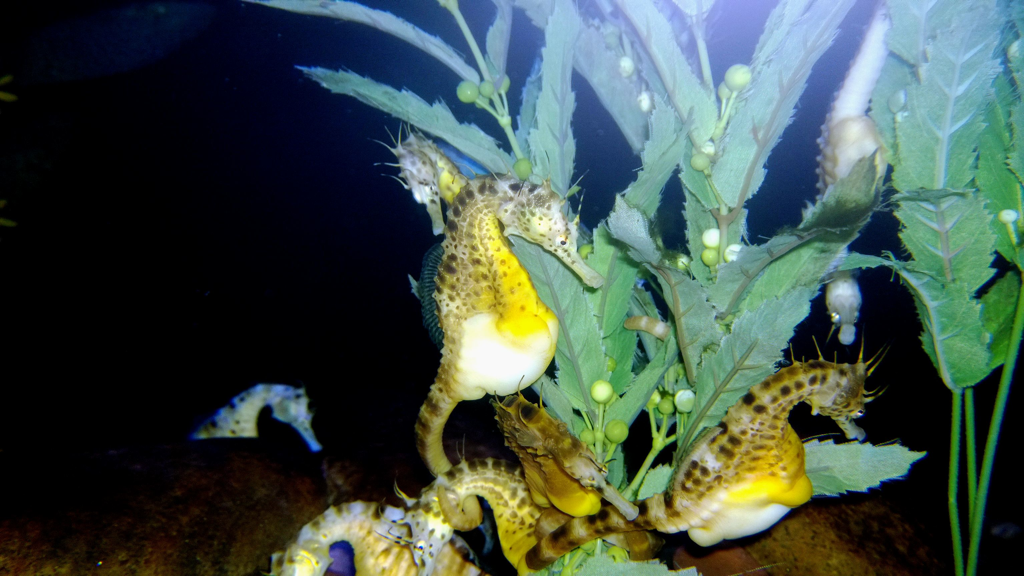
Pot-bellied seahorses, as the name suggests, have a large swollen belly. Like other seahorses, this species comes in a wide range of colors – brown, yellow, gray, white, orange or mottled with dark spots on its head and trunk. They have a forward-tilted, long-snouted head, eyes that can move independently of each other and a prehensile tail. Males and females differ in appearance. Males have a longer tail, a shorter snout and a smooth soft pouch-like area at the base of the abdomen. Females have more of a pointed stomach.
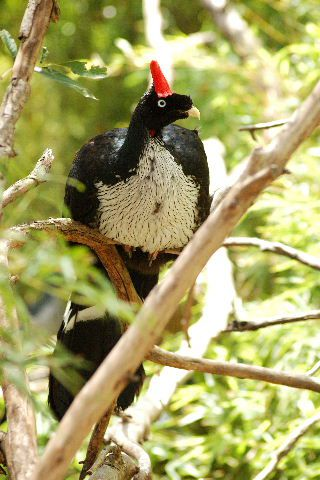
The Horned guan is an impressive, unmistakable bird that is named for the unusual red “horn” of bare skin at the tip of its head. Adults sport a horn that averages between 1.6 – 2.4 inches (4 – 6 cm) in height. This large cracid is glossy black above, with a blue-green sheen. The foreneck, breast and upper belly are mostly white, with black flecks. The lower belly and flanks are brown. A striking, white band is near the base of the tail. Horned guans also have a small red dewlap (loose skin hanging under the neck). The legs are red, iris is white and the bill is yellow. Sexes are alike, however it has been reported that the lengths of tarsus, wing, tail and horn are somewhat longer in males. Vocalizations and behavior can be used more accurately for the identification of males and females.

The most brilliantly colored of the six species of flamingos, this familiar bird breeds in various Caribbean islands, the Caribbean coast of South America, the Yucatan Peninsula, and the Galapagos. The American or Caribbean flamingo remains abundant in the wild. In captivity, there are more than 4,000 worldwide, with more than 1,500 in US collections alone. They easily live more than 40 years in zoos. Since the first captive breeding in 1937, they have been hatched in many places. They build their nests from mud, and lay only one egg at a time.
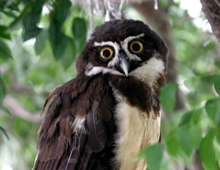
Found in forests from southern Mexico to Argentina, this owl was known to the Aztecs for sounding like “tiles clinking together”. Instead of hooting, they primarily produce a rapid knocking or tooting sound. Because of this call they are called “Coffin Makers” in parts of their range. Imported to England more than 150 years ago, it has long been a popular bird in captivity, and has bred in a number of collections, including the DWA. Young birds have a black mask that eventually retracts to the adult’s face pattern.
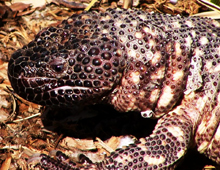
This larger, more arboreal relative of the Gila monster is easily distinguished from it by being black and cream-colored, rather than black and pinkish-orange. Like the Gila monster, it is venomous, possessing glands in its lower jaw. It is not found in the US, but occurs in Mexico and Guatemala. It appears to feed almost entirely on eggs of birds and other reptiles. Prized as a zoo exhibit, it has been bred in several collections, including the DWA.
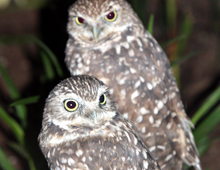
Found all the way from the prairies of Southern Canada to Tierra del Fuego at the tip of South America, this is one of the most widespread birds of the New World. Throughout this vast range, it lives in holes in the ground. Though often awake in the daytime, its favorite times to hunt are dusk and dawn. Its prey is mostly insects and rodents. It thrives in captivity, and has bred at the DWA and in other collections. In mythology, owls were messengers of the Mayan Underworld, and companions of the Aztec Death God.

In zoos, colonies of this species are like yeast — a few sent to another zoo soon reproduce to the carrying capacity of their exhibit, and more colonies can be established from there. From a few importations more than 30 years ago, there are now more than 6,000 of these fruit-eating bats distributed among more than 30 North American collections. This is a widespread species, found from Mexico to Paraguay. In the Mayan epic, the Popol Vuh, a bat, Zotz, stole the head of the Hero God Hunahpu for the Gods of the Underworld to use in a ballgame.

Also known as the Rainbow-billed or Sulfur-breasted toucan, it is popular for its resemblance to “Toucan Sam™”, the “Froot Loops®” mascot. The northernmost of the large toucans, it ranges from the Mexican state of San Louis Potosi south to Colombia and Venezuela. Much habitat has been lost to agriculture. Though first hatched in captivity at the Houston Zoo, in 1974, it has not bred consistently in collections. The DWA is involved in a captive breeding consortium for this species involving both private collections and public zoos.

